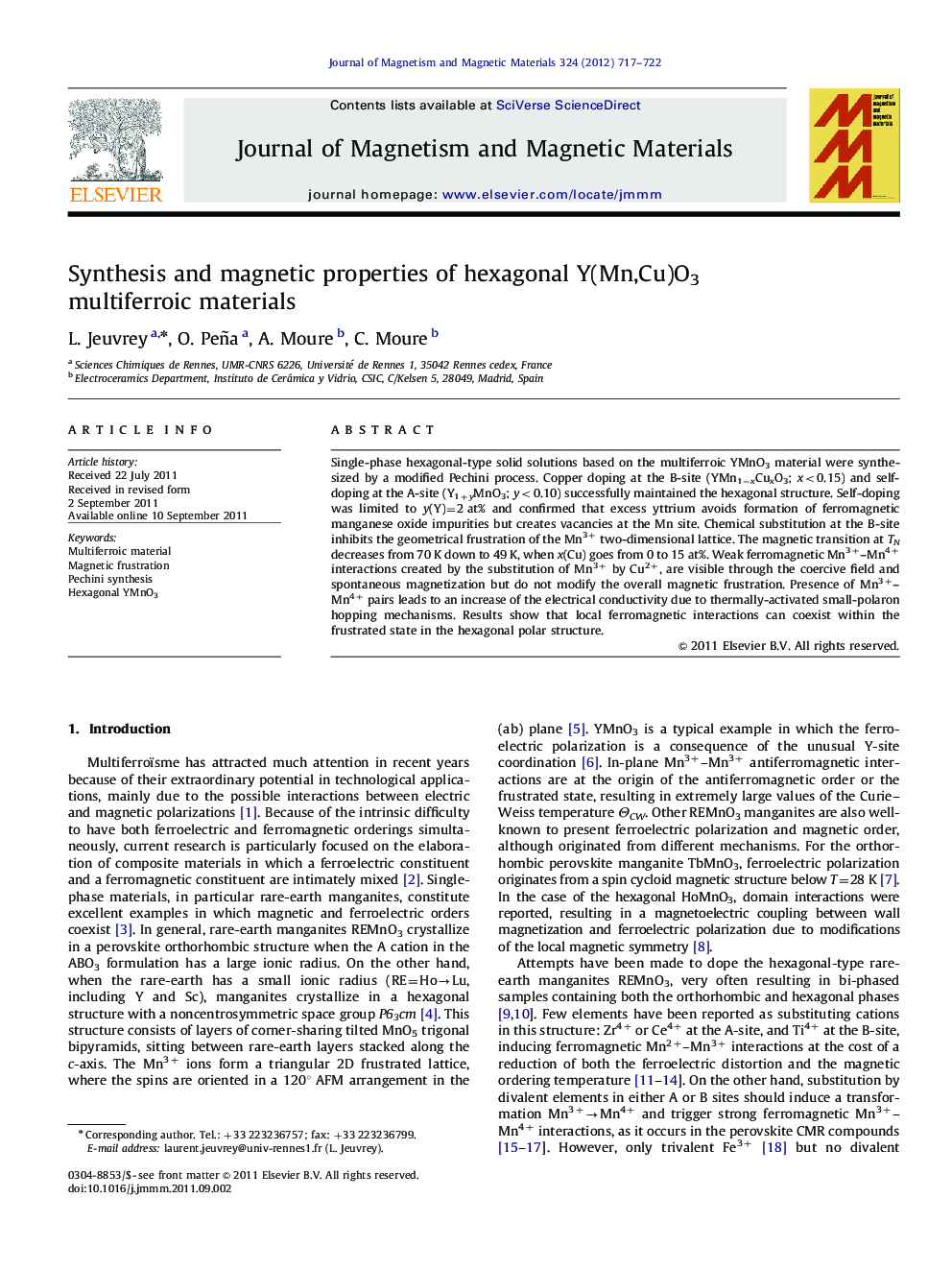| Article ID | Journal | Published Year | Pages | File Type |
|---|---|---|---|---|
| 1800214 | Journal of Magnetism and Magnetic Materials | 2012 | 6 Pages |
Single-phase hexagonal-type solid solutions based on the multiferroic YMnO3 material were synthesized by a modified Pechini process. Copper doping at the B-site (YMn1−xCuxO3; x<0.15) and self-doping at the A-site (Y1+yMnO3; y<0.10) successfully maintained the hexagonal structure. Self-doping was limited to y(Y)=2 at% and confirmed that excess yttrium avoids formation of ferromagnetic manganese oxide impurities but creates vacancies at the Mn site. Chemical substitution at the B-site inhibits the geometrical frustration of the Mn3+ two-dimensional lattice. The magnetic transition at TN decreases from 70 K down to 49 K, when x(Cu) goes from 0 to 15 at%. Weak ferromagnetic Mn3+–Mn4+ interactions created by the substitution of Mn3+ by Cu2+, are visible through the coercive field and spontaneous magnetization but do not modify the overall magnetic frustration. Presence of Mn3+–Mn4+ pairs leads to an increase of the electrical conductivity due to thermally-activated small-polaron hopping mechanisms. Results show that local ferromagnetic interactions can coexist within the frustrated state in the hexagonal polar structure.
▸ Hexagonal-type solid solutions of Y(Mn,Cu)O3 synthesized by Pechini process. ▸ Chemical substitution at B site inhibits geometrical magnetic frustration. ▸ Magnetic transition decreases with Cu-doping. ▸ Local ferromagnetic Mn–Mn interactions coexist with the frustrated state.
